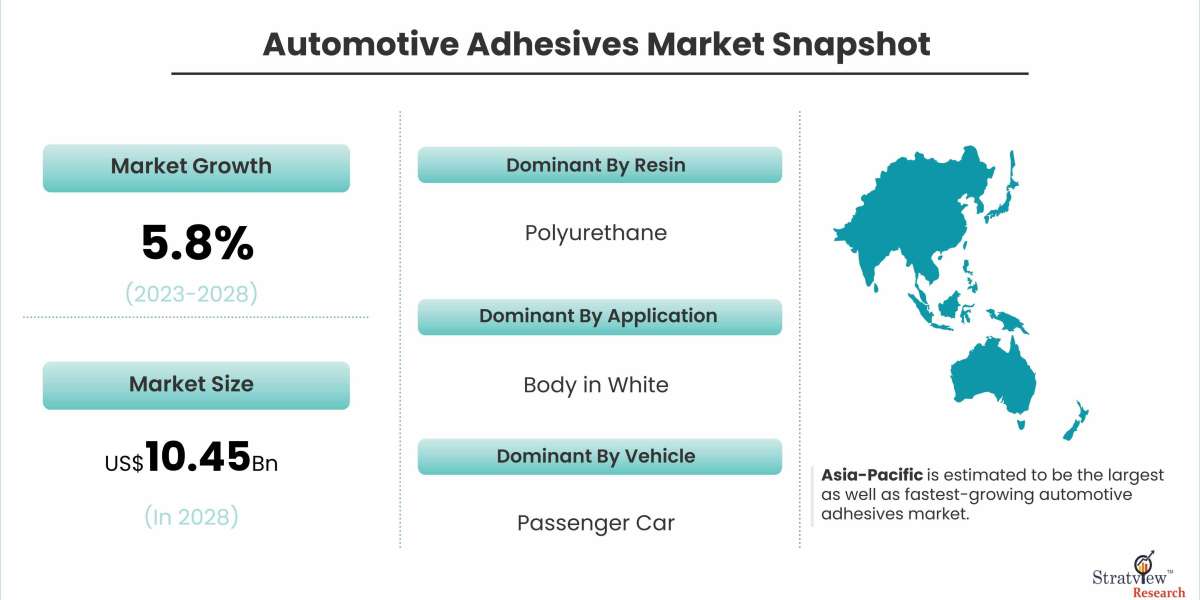The global automotive adhesives market is experiencing rapid growth, driven by technological advancements, the rise of electric vehicles (EVs), and the increasing demand for lightweight and fuel-efficient vehicles. However, the market also faces several challenges that need to be addressed to sustain this growth.
According to Stratview Research, the automotive adhesives market was estimated at USD 7.43 billion in 2022 and is likely to grow at a CAGR of 5.8% during 2023-2028 to reach USD 10.45 billion in 2028.
Challenges
Raw Material Price Volatility: The automotive adhesives market is heavily dependent on petrochemical-based raw materials. Fluctuations in the prices of these raw materials can significantly impact the production costs and pricing strategies of adhesive manufacturers. This volatility poses a challenge for maintaining profit margins and competitiveness in the market.
Stringent Environmental Regulations: The automotive industry is subject to stringent environmental regulations aimed at reducing carbon emissions and promoting sustainability. Adhesives must comply with these regulations, which often require low volatile organic compound (VOC) emissions and the use of environmentally friendly materials. Adapting to these regulations can be challenging and may require significant investment in research and development.
Technical Limitations: While adhesives offer numerous advantages, they also have technical limitations. For instance, certain adhesives may not perform well under extreme temperatures or in high-stress applications. Ensuring the reliability and performance of adhesives across various conditions is a critical challenge for manufacturers.
Competition from Traditional Fastening Methods: Despite the advantages of adhesives, traditional fastening methods such as welding, bolting, and riveting still hold a significant share in the automotive assembly process. Convincing manufacturers to transition from these established methods to adhesive bonding requires demonstrating clear benefits and overcoming resistance to change.
Opportunities
Growth of Electric Vehicles (EVs): The rise of EVs presents a significant opportunity for the automotive adhesives market. EVs require lightweight materials to enhance battery efficiency and range. Adhesives play a crucial role in bonding dissimilar materials and reducing vehicle weight, making them indispensable in EV manufacturing.
Advancements in Adhesive Technologies: Continuous advancements in adhesive technologies are opening new avenues for market growth. Innovations such as structural adhesives with enhanced bonding strength, faster curing times, and improved durability are expanding the application scope of adhesives in the automotive sector.
Increased Focus on Lightweighting: The automotive industry's focus on lightweighting to improve fuel efficiency and reduce emissions is driving the demand for advanced adhesives. Adhesives enable the use of lightweight materials such as composites and plastics, contributing to the overall weight reduction of vehicles.
Growing Automotive Production in Emerging Markets: The expansion of the automotive industry in emerging markets such as China, India, and Brazil offers significant growth potential for the adhesives market. Increasing vehicle production and rising consumer demand for high-performance and eco-friendly vehicles are boosting the adoption of automotive adhesives in these regions.
Sustainability Trends: The growing emphasis on sustainability is encouraging the development and adoption of eco-friendly adhesives. Bio-based adhesives and those with low VOC emissions are gaining traction, aligning with the industry's shift towards greener manufacturing practices.
Conclusion
The global automotive adhesives market is poised for significant growth, driven by the evolving automotive landscape and the shift towards more sustainable and efficient vehicles. While challenges such as raw material price volatility, environmental regulations, and technical limitations persist, the opportunities presented by the growth of EVs, advancements in adhesive technologies, and the focus on lightweighting are expected to propel the market forward. Addressing these challenges and leveraging the opportunities will be key to sustaining growth and innovation in the automotive adhesives market.














